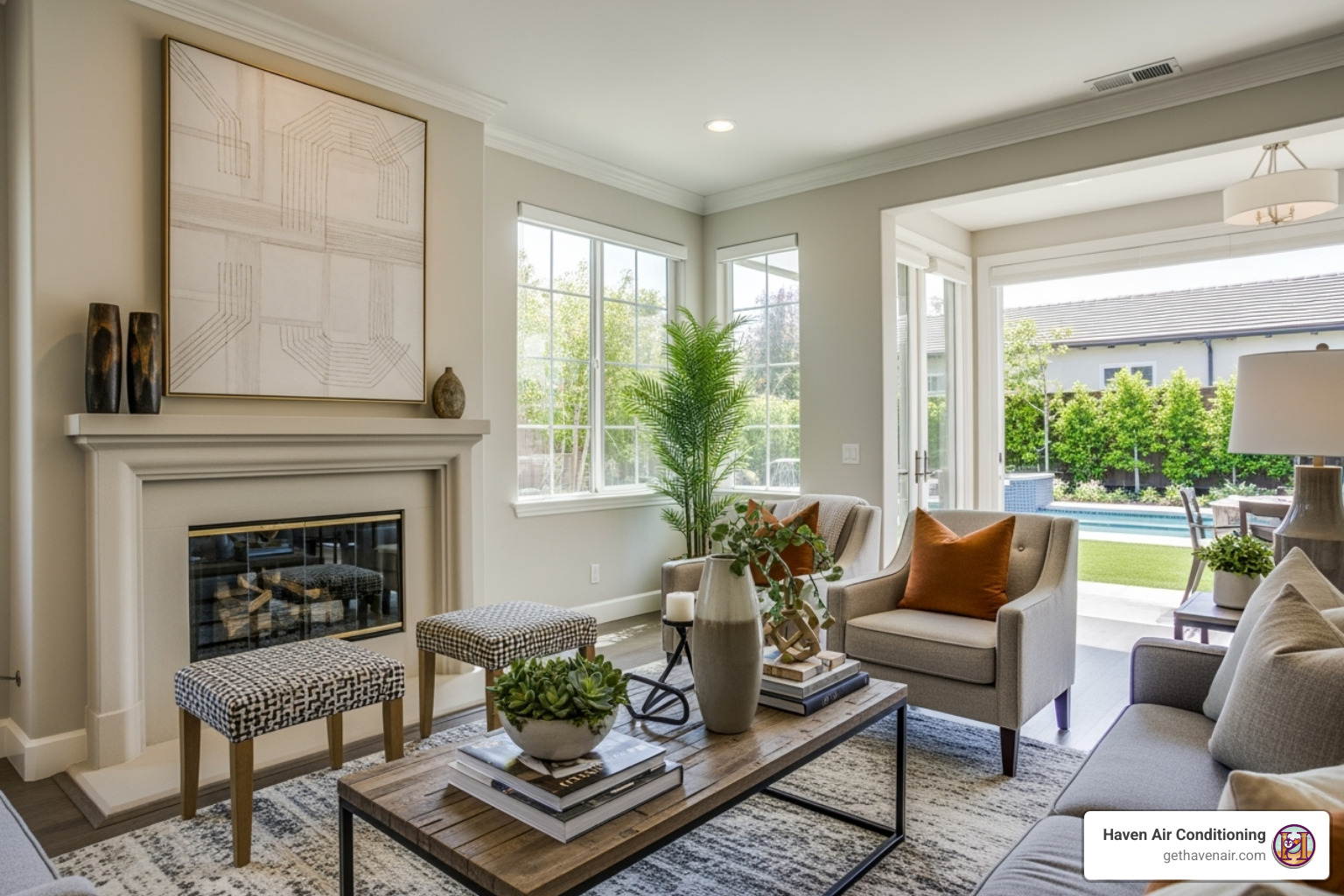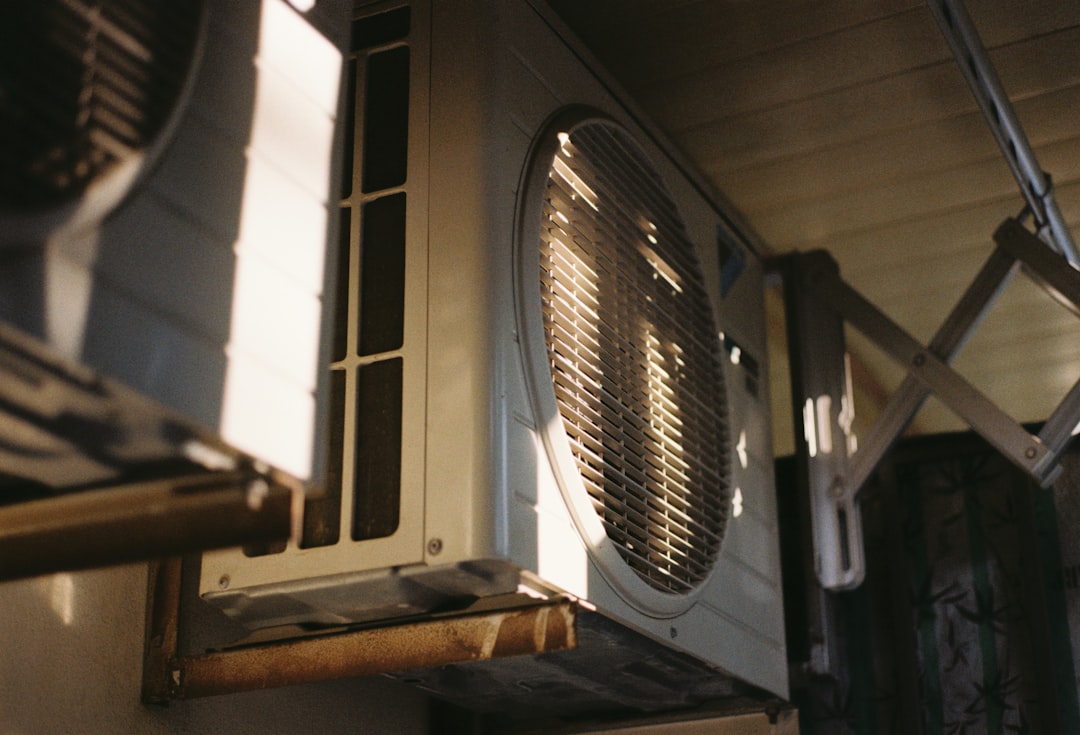When your AC is running but your home still feels warm, it’s easy to get frustrated—especially during the warmer months in Orange. You expect cool air, and instead, there’s barely any relief. It’s one of the most common problems people face during the summer. And while it may seem like something big has gone wrong, it often comes down to a few things that are simple to check.
Before picking up the phone to schedule a service call, it’s a good idea to rule out a few common issues. Some problems may not need a repair at all, just a simple reset or quick cleaning. The goal here is to help you figure out what might be going on with your air conditioner and understand whether it’s something that needs professional attention. Let’s walk through some quick, easy checks that can help get your system back to cooling—or at least give you a solid reason to call in our professionals.
Check the Thermostat Settings
It may sound obvious, but the thermostat is often overlooked. If your AC is running but it’s not cooling, the first thing you should check is whether the system is actually set to cool mode. It’s possible someone in the house changed the settings without realizing it, especially with digital thermostats where buttons are easily pressed.
Make sure your thermostat is:
– Set to “Cool” mode
– Set to a temperature lower than the current room temperature
– Powered on and showing a screen that isn’t dimming or flashing
If everything looks correct but your system still isn’t cooling, try resetting the thermostat. This can involve switching it off for a few minutes and then turning it back on. For smart thermostats, you may also need to check for an app setting that may be overriding what you see on the wall unit. Also look out for a scheduling feature that might be kicking the system on or off at preset times. These are often built in, especially with smart models.
Incorrect thermostat settings can easily trick your system into running the fan without engaging the cooling cycle. This means you’ll hear airflow, but the air will feel just as warm as the room. The good news is that this is one of the easiest things to fix and usually doesn’t require a service visit.
Inspect the Air Filter
Dirty filters are a leading cause of poor cooling in homes. When the filter is clogged, it blocks airflow, which means less cool air is circulating through your vents. The system ends up working harder than it should, but still struggles to lower the temperature.
In most homes, the filter is located behind a return grille inside the hallway or in a slot inside the indoor unit. You can remove it and hold it up to a light source. If you can barely see light through it, it’s time for a replacement. Filters should typically be changed at least every 1 to 3 months, but in a busy household or one with pets, you may need to do it more often.
A client in Orange once called frustrated that their two-year-old AC system wasn’t cooling properly. When we checked their filter, it hadn’t been replaced in over six months. Within minutes of swapping in a clean one, airflow improved, and the home started to cool within the hour. That’s how much of a difference a clean filter can make.
Make sure you’re using the right filter size, and if you’re not sure, bring the old one along to a local hardware store. Many stores in Orange carry common residential filter sizes. Just be sure to insert it with the arrow pointing in the direction of the airflow. That small detail makes a big difference.
Examine the Outdoor Unit for Obstructions
Your AC’s outdoor unit needs plenty of airflow to do its job. When the area around it gets blocked or cluttered, it can start acting up. If your system is humming along but the air inside your home doesn’t feel any cooler, it’s worth walking outside and checking on the outdoor unit.
Start with a visual inspection. Look for:
– Leaves, dirt, or trash that’s built up around the base
– Overgrown bushes or plants pressing against the unit
– Any signs of damage or bent fins
Clear at least two feet of space around the unit in all directions. Trim any vegetation that’s too close. If there’s dirt or dust caked onto the coils, it’s okay to use a garden hose to spray gently across the surface. Don’t use high pressure—just a light rinse to free up debris.
One homeowner in Orange noticed their unit was located next to their backyard garden. Over time, fallen petals and leaves had packed into the coil fins, making it impossible for the system to release heat. Just cleaning out the clutter made a noticeable difference in how fast their AC cooled the home. Keeping this part of your system clean can lead to better comfort and lower run times.
Check for Refrigerant Leaks
Refrigerant doesn’t get used up like gas in a car. If it’s low, there’s almost always a leak. Without enough refrigerant, your AC can’t absorb and remove heat from the air efficiently. That means it’ll run longer and cool less—sometimes blowing warm air instead.
Here are signs that may point to a refrigerant leak:
– Ice buildup on the refrigerant lines or indoor coil
– A hissing or bubbling noise near the outdoor unit
– Short cooling cycles paired with poor indoor comfort
Don’t try to fix a suspected leak yourself. Refrigerant is pressurized and requires licensed handling. If you think your system might be low, that’s the time to stop running it and call our technicians. Continuing to run the system can damage the compressor, leading to more expensive repairs.
Leaks can develop slowly over time due to corrosion or vibration. They won’t always show clear symptoms right away. But if your system keeps needing to be recharged or if ice forms unexpectedly, it’s time to get it checked professionally.
Make Sure Vents and Registers Are Open
Blocked, closed, or dirty vents can mess with airflow and trick you into thinking something’s wrong with your AC. Even if your unit is working properly, the air needs a clear path to reach each area of your home. Take a quick walk through to make sure vents are open and unobstructed.
Watch for:
– Furniture pushed up against vents
– Carpets or rugs covering floor registers
– Closed supply vents, especially in less-used rooms
Some homeowners close vents in unused rooms to try and save energy, but this can throw off airflow and increase pressure in your duct system. That can lead to leaks or make your HVAC system work harder than needed.
Dust and pet hair also tend to collect on vent covers. A quick vacuum or wipe with a damp cloth can help keep air flowing smoothly. Regular checks are simple and support consistent comfort all summer long.
Know When It’s Time for a Technician
If you’ve gone through each of these steps and your AC is still not doing the job, it may be time to involve our technicians. There are many things inside a system that can break down or lose efficiency, and those issues aren’t always obvious from the outside.
Here are some signs it’s time to contact a professional:
– AC runs constantly but never cools enough
– AC turns off too early before the set temperature is reached
– You notice water pooling or ice forming
– Circuit breakers trip when the AC starts or runs
Just because your system turns on doesn’t mean everything is working as it should. The longer your AC struggles to cool, the more wear it will take. During hot seasons in Orange, early action can mean easier repairs and fewer surprises.
Our technicians have the right training and tools to find problems quickly. When your cooling is off, getting a professional diagnosis can mean the difference between a minor adjustment and a major repair. Let us help you return to a more dependable and comfortable home environment.
If your AC continues to fall short in delivering the cool, soothing air your home needs after trying simple fixes, a reliable solution may be right around the corner. At Haven Air Conditioning, we understand how frustrating a lingering cooling issue can be in Orange, and our professionals are ready to help resolve the problem quickly. Explore our air conditioner service in Orange to get the support your system deserves, and for a quick estimate or to book a service visit, please contact us today.





